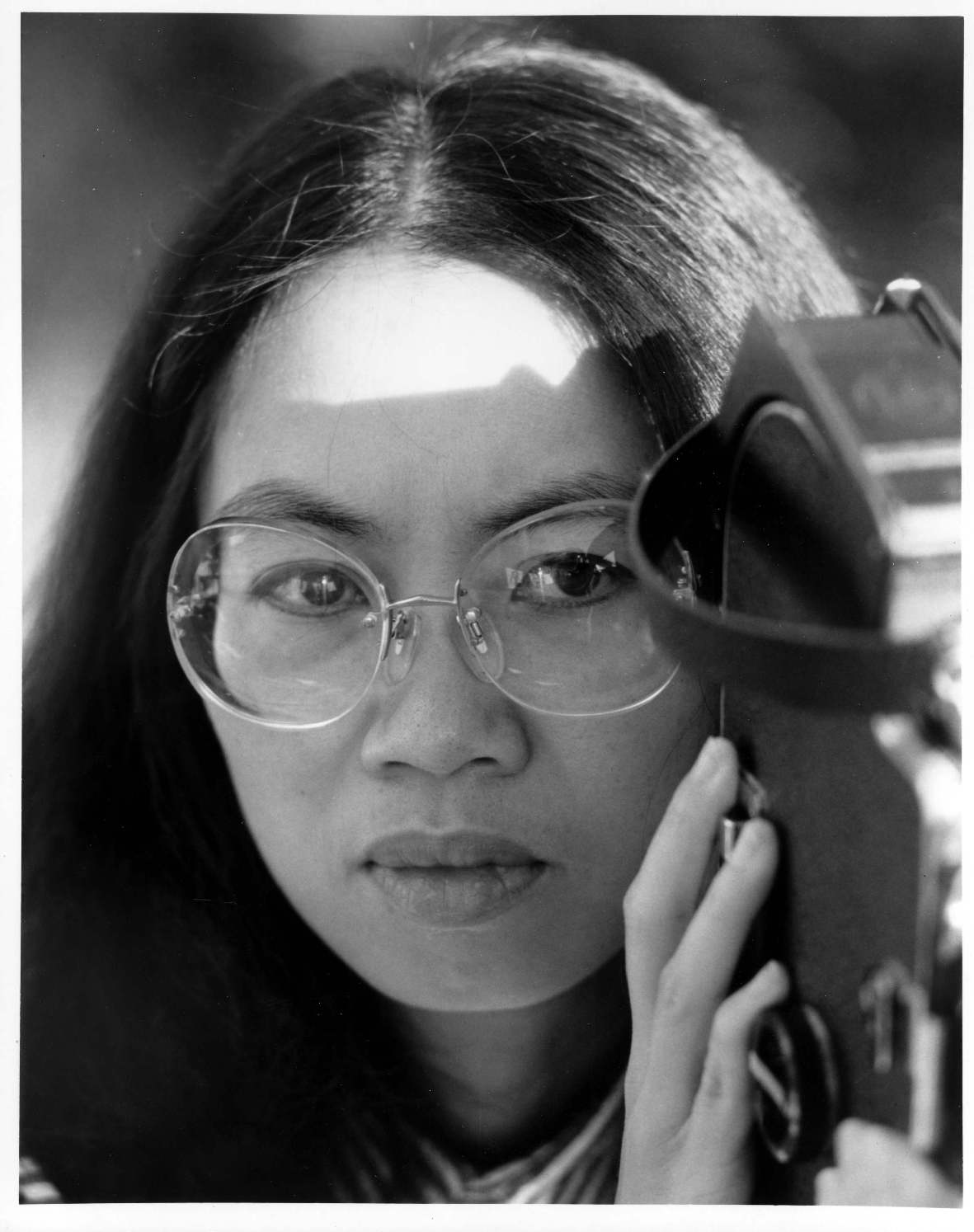 | Born in 1952 in () Lives and works in (United States ) | Biographie Bibliographie Liste expositions |
 | Born in 1952 in () Lives and works in (United States ) | Biographie Bibliographie Liste expositions |
Born in Vietnam in 1952, Trinh T. Minh Ha grew up in Saigon, where she studied the piano, during the American occupation. She left for the United States in 1970, and studied music, ethnomusicology and French, which would lead her to travel. It was on her arrival in the United States that she discovered cinema, which was not particularly visible in Vietnam at the time.
From 1977 to 1980, she moved to Dakar, where she taught music at the National Art Institute. There, she observed the country, its customs and the role of women, while also analysing the Western world’s view of this culture. She returned to Senegal in 1981 to shoot her first film Reassemblage in 16mm, which was released in 1982. In her approach to ethnological film, Trinh T. Minh Ha’s intention is to film in an undetermined manner, allowing a view of Senegalese society to emerge that is freed of Western thinking. While there is no intention on her part to be assimilated to experimental cinema, the structure, editing and framing, which escape conventional representational methods, have nonetheless been integrated within this cinematic fringe. Her position as an expatriate, but also her feminine condition, have led her to question the power relations of one culture over another, of dominant over dominated. In the introduction to Reassemblage, Trinh T. Minh Ha’s voice announces: “I do not intend to speak about, just speak nearby.”
In her next film, Naked Spaces - Living is Round (1985), the soundtrack consists of three female voices: one is in low tones, comparable to the voices of the villagers filmed, the second is strong and cites Western thought while commenting on the images, and the third speaks in the third person, relating her emotions and observations. Here, the artist develops her critique of both ethnographic and documentary films, alternating points of view, creating a rupture in the univocality of the documentary genre. She critiques the conventional representation of indigenous societies, by underlining the subjectivity inherent to an external gaze. Three points of view are thus superimposed: the institutional Western gaze, that of the person filmed, and that of the director, who is also subject to emotions and reactions.
It was from there that Trinh T. Minh Ha established the notion of the “inappropriate/d other”, (“l’autre inapproprié”) whose double meaning, in English as in French, appropriately identifies the idea of the other – whom we cannot appropriate – or the unadapted other: “Not quite other, not quite the same.” By developing this view of the other, she approaches the study of people and deals with the ethnographic film in a very personal manner, through her way of observing a foreign culture. Her theories are developed in the book Woman, Native, Other: Writing Postcoloniality and Feminism, which were published in 1989 [1]. The discontinuous treatment characteristic of her films is reflected in this publication. By de-structuring her subject, Trinh T. Minh Ha appeals to her reader’s mind and memory, thus opening up space for thoughts about “the other”.
As an extension of her research on one culture’s view of another’s, the film Viet Given Name Nam (1989) questions translation and interpretation. Five Vietnamese women were interviewed. Their replies are interspersed with archive images and photos. Over the course of these images, these women, who seemed to be evoking their own past, reveal themselves to be Vietnamese immigrant actors playing the role of Vietnamese women. In this complex structure, the voices of these women question exile, traditional society and the break with the past since the war.
In 1996, she directed A Tale of Love, shot in 35 mm, a film that continues her research into her culture of origin. Her first fiction was freely inspired by a 19th century Vietnamese poem about the tragic story of Kieu, who became a prostitute to support her family. The film opens on a citation from these verses, immediately breaking away from linear narration, using suggestive and poetic evocation. This poem has become the metaphor for the history of the many Vietnam invasions. By transposing it within contemporary America, the artist once again questions the possibility of understanding a foreign culture, through this portrait of an immigrant, torn between two cultures and tormented by her financial problems.
In 2001, the artist shot her first film in digital video in Japan, entitled The Fourth Dimension. The film is constructed like a journey: the images juxtapose the Japan of rituals and traditions to images from everyday life.
Trinh T. Minh Ha continues her academic career by teaching throughout the world. She has been a guest lecturer at the Universities of Cornell, San Francisco, Smith and Harvard in the United States, and the University of Tokyo in Japan. She teaches at the University of California in Berkeley in the United States.
Patricia Maincent
[1] Bloomington: Indiana University Press, 1989.